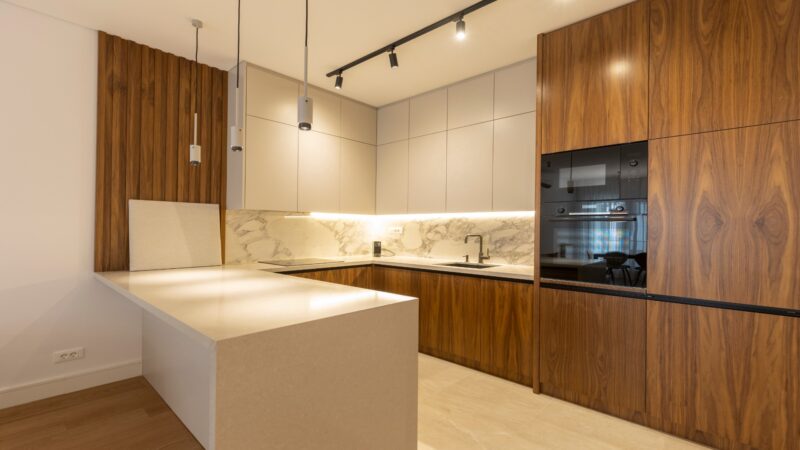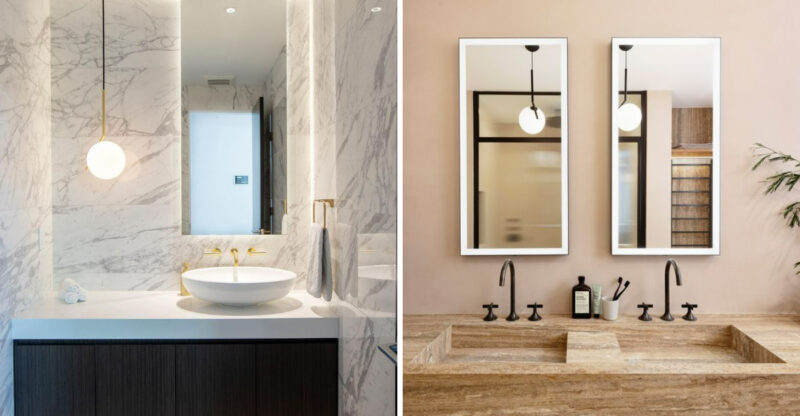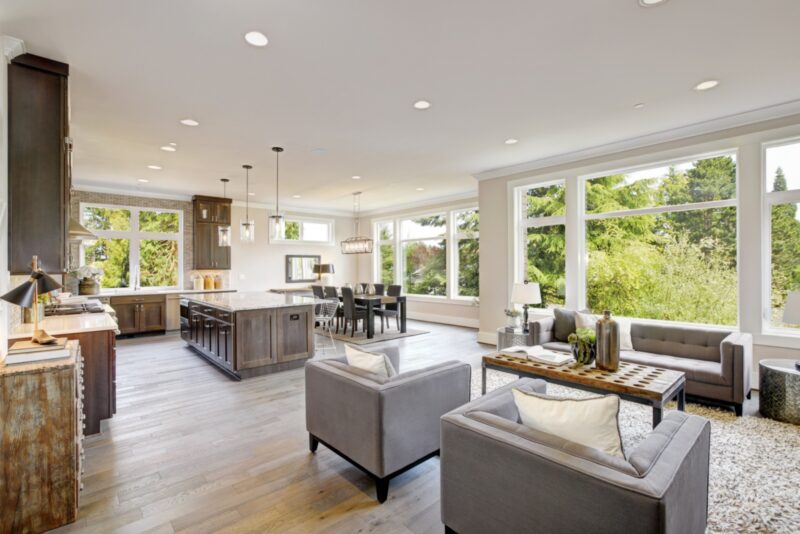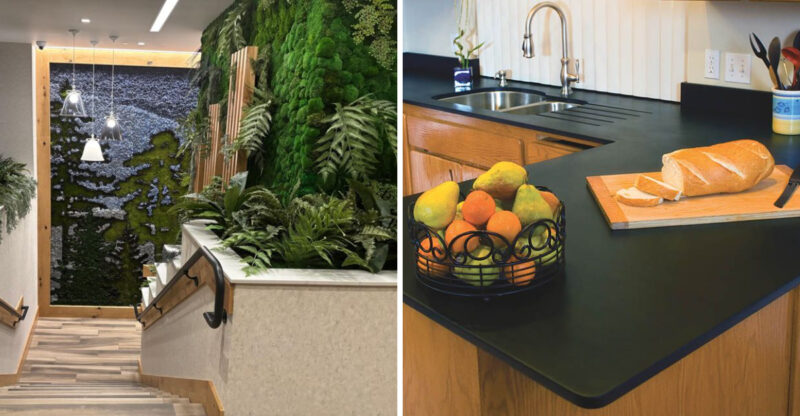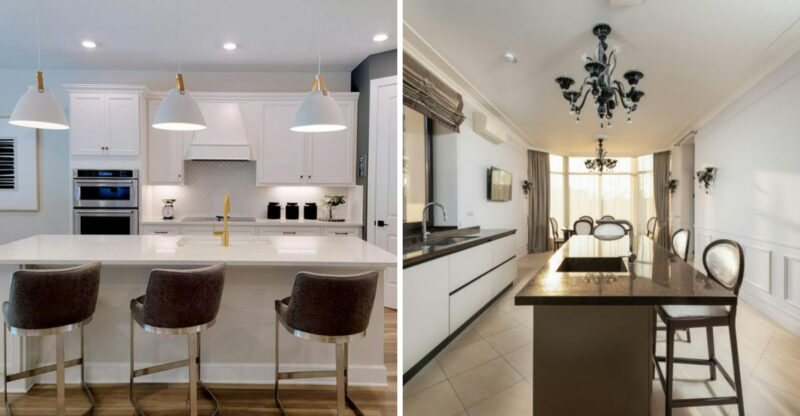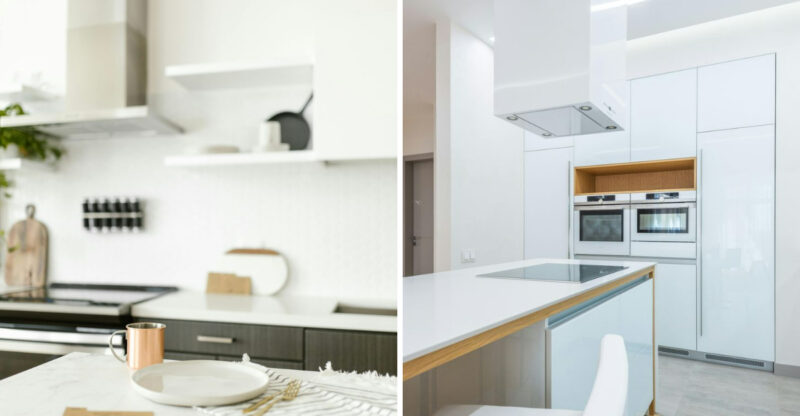Minnesota Cabin Living Rooms That Handle Long Winters
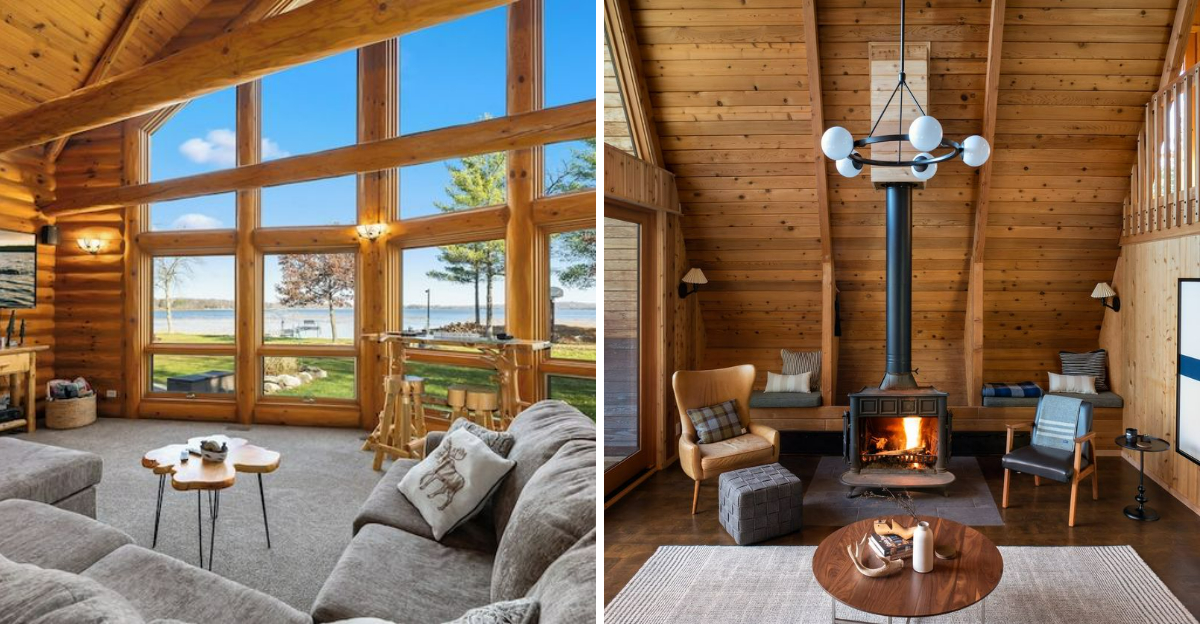
When Minnesota’s famous winter settles in for months of snow and sub-zero temperatures, a well-designed cabin living room becomes your sanctuary. I’ve spent countless hours helping folks create spaces that fight off the winter blues while embracing the season’s quiet beauty.
These living rooms don’t just survive Minnesota winters – they help you thrive during the long, dark months when outdoor activities are limited to the truly brave.
1. Layered Lighting Systems
Nothing battles the 4:30 PM winter darkness like thoughtful lighting. I recommend combining overhead fixtures, wall sconces, and plenty of floor and table lamps to create pools of warmth throughout your space.
Adjustable options let you brighten the room during gloomy afternoons or dim things for cozy evening ambiance. Smart bulbs that mimic natural daylight can even help fight seasonal affective disorder, which hits hard in our northern climate.
2. Wood Stove Focal Points
My clients who install wood stoves rarely regret it. Beyond the practical heat source, there’s something primal about gathering around dancing flames that electric fireplaces can’t match.
Modern designs offer incredible efficiency while creating that unmistakable crackling ambiance. Position comfortable seating around this natural focal point, and you’ve created the heart of your winter cabin. Remember to include proper wood storage nearby for both function and rustic charm.
3. Strategic Window Placements
Windows become crucial storytellers during Minnesota winters. Positioning your main seating to face south-facing windows maximizes precious winter sunlight and frames the snow-laden landscape like living artwork.
Consider installing window seats where you can curl up with a book while watching snowfall. Quality thermal curtains are non-negotiable for nighttime, trapping heat inside while adding textile richness to your space. The contrast between snowy views and indoor warmth creates magical winter moments.
4. Convertible Layout Designs
Cabin fever is real! After weeks indoors, everyone needs change. Furniture on casters allows easy rearrangement when you’re climbing the walls in February. Modular sofas can be reconfigured from intimate conversation setups to movie-night formations.
Folding tables emerge for puzzle marathons. I recommend leaving open floor space for impromptu yoga or dance parties when cabin fever strikes. Flexibility within your four walls becomes essential during our longest season.
5. Heat-Retaining Materials
Stone, brick, and concrete elements aren’t just stylish – they’re functional heat batteries during winter. Materials with high thermal mass absorb warmth during the day and release it slowly throughout the evening.
A stone hearth or exposed brick wall near your heat source maximizes efficiency. Slate flooring in sunlit areas captures solar heat. Consider installing a heated floor system beneath stone tiles in main living areas – your feet will thank you on January mornings! These materials create both visual anchors and practical warmth.
6. Indoor-Outdoor Connection Points
Maintaining a relationship with nature prevents winter isolation. Large picture windows framing snow-covered pines become living artwork that changes throughout the day. A covered porch with a heater creates a transition zone for brief outdoor moments.
Bird feeders positioned within view bring wildlife entertainment. Indoor plants thrive near south-facing windows, adding life during barren months. These connections remind us that winter isn’t something to simply endure – it’s a season with its own distinct beauty.
7. Activity Zones For Sanity
Long winters require intentional spaces for varied indoor activities. I advise creating distinct zones within your living area – a reading nook with good lighting and a comfortable chair, a game table for puzzles or cards, and a media area for movies. Built-in bookshelves stocked with winter reading keep minds engaged. A small desk near a window provides space for creative projects. Having designated areas prevents the restlessness that comes from months indoors and helps maintain household harmony during the longest season.
8. Sound-Conscious Environments
Acoustic comfort becomes crucial when everyone’s indoors for months. Soft surfaces like area rugs, upholstered furniture, and textile wall hangings absorb sound and create a peaceful atmosphere despite prolonged togetherness.
Consider the placement of noisy areas versus quiet zones. A small sound system for ambient music helps mask the constant hum of heating systems. Cabin walls can be thin, so acoustic panels disguised as artwork offer functional decoration. These thoughtful touches maintain sanity during the long indoor season.
9. Smart Storage Solutions
Winter gear multiplies in Minnesota – snowshoes, ice skates, extra blankets, and endless layers. Incorporating clever storage prevents cabin clutter from overwhelming your living space. Window seats with hidden storage, ottomans that open for blanket storage, and built-ins around the fireplace keep essentials accessible but organized.
I always recommend a dedicated entry zone with hooks, baskets, and boot trays to contain melting snow. These systems maintain order during the months when everything happens indoors.

